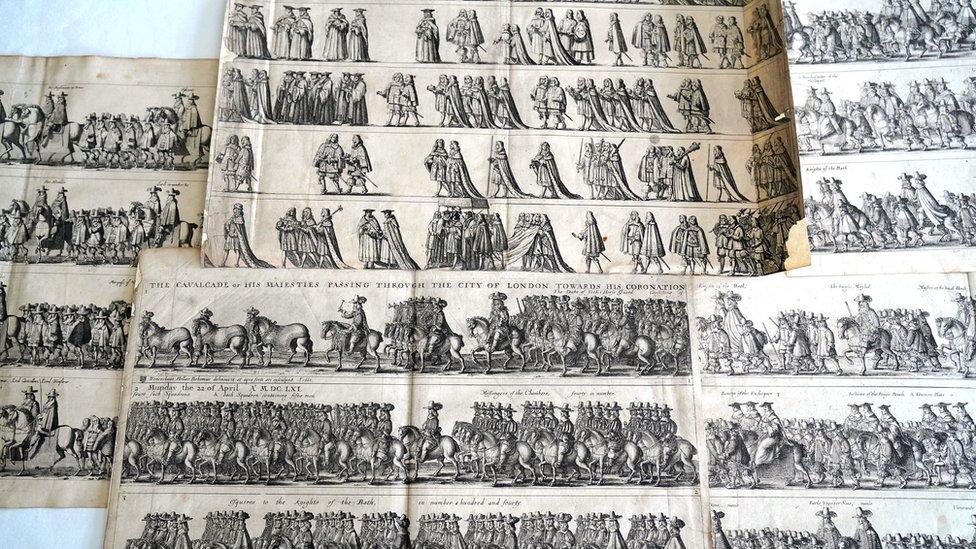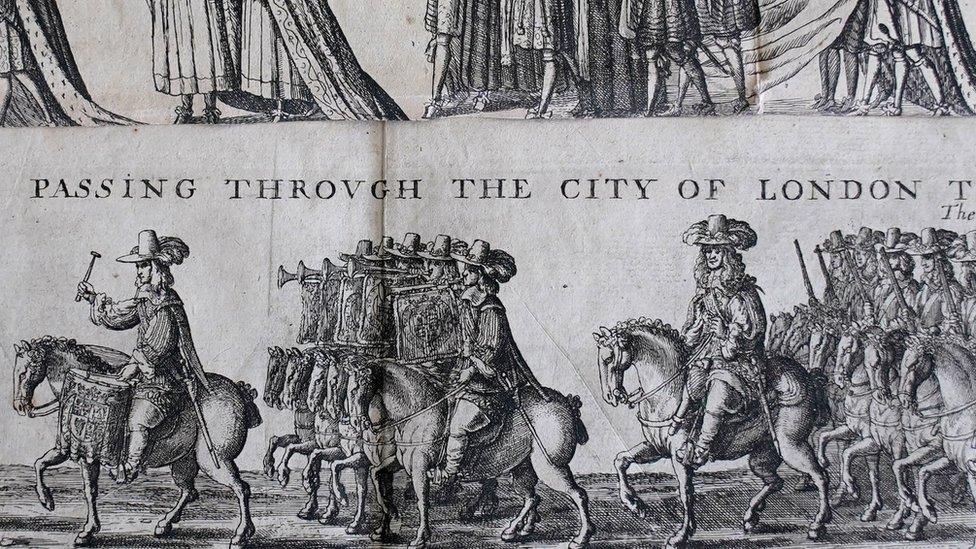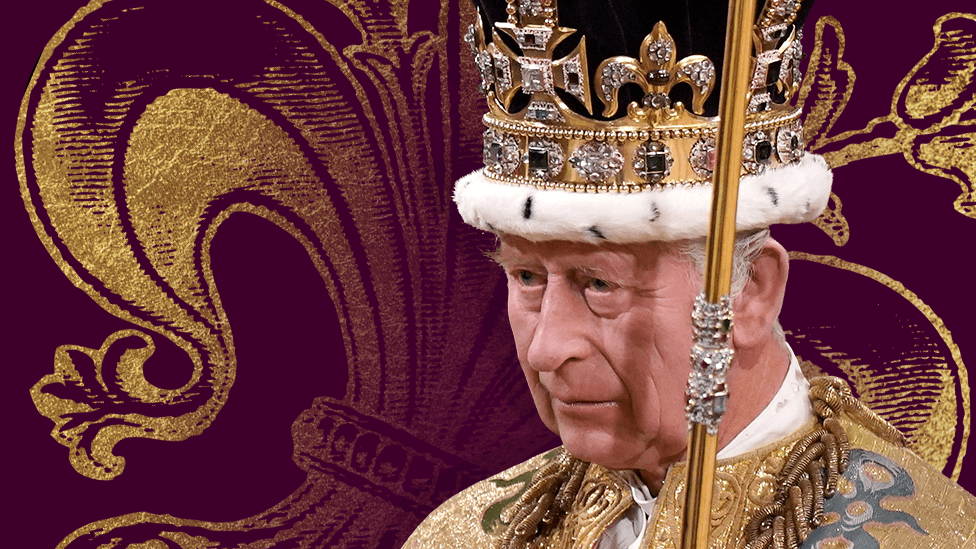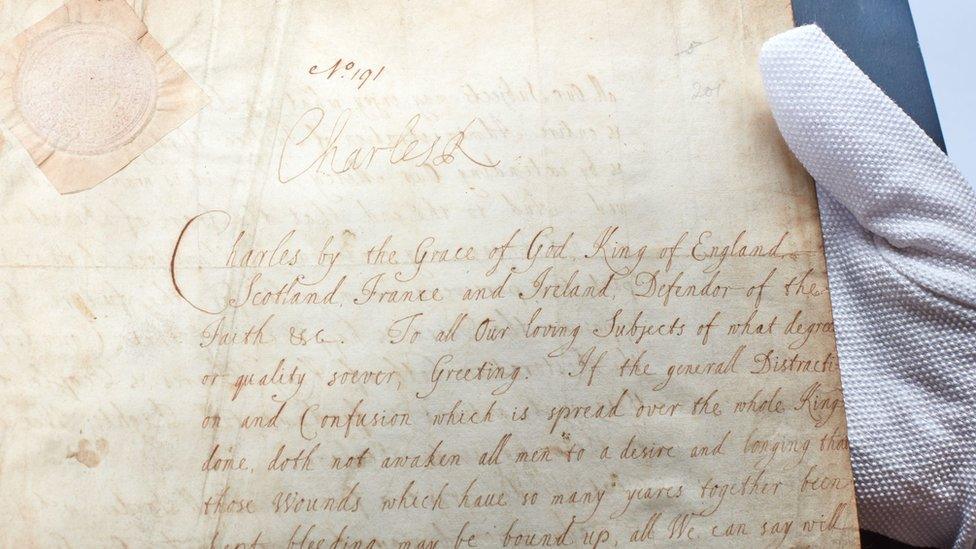Charles II Coronation etchings found in cupboard
- Published

Wenceslaus Hollar was a famed artist of the day from Bohemia, an historical region of the Czech Republic
A set of etchings depicting the Coronation of Charles II has been discovered in the back of a cupboard, 362 years after the ceremony.
The 20 images, created by the graphic artist Wenceslaus Hollar in 1661, illustrate the restored Stuart king's procession to Westminster Abbey.
Featured in the drawings are the crown and regalia, which will feature in the procession of Charles III next month.
They were found at a house in Notting Hill, west London, auctioneers said.

The etchings were discovered during a house clearance
Charles II was crowned on 23 April 1661, a little over 12 years after the execution of his father Charles I.
The Coronation was an extravagant and lavish occasion, with the Royal Collection Trust describing the procession as "magnificent".
Hollar, a famed artist of the period, created the etchings using acid to form lines on a metal plate. These lines were then filled with ink and printed on to paper.

Charles II's Coronation took place on St George's Day in 1661
The etchings are said to be in "very good condition" by Catherine Southon Auctioneers, which will sell them in July.
Ms Southon said the "fascinating" artworks showed "the full procession including the Duke of York, the full Royal Household, aristocracy and King Charles II" along with the royal crown, orb and sceptre.
She added: "The same crown and regalia will be used in May for the procession of Charles III in today's more streamlined occasion.
"But smartphones will be the chroniclers of today's coronation rather than Bohemian engravers like Wenceslaus Hollar."

Follow BBC London on Facebook, Twitter and Instagram. Send your story ideas to hellobbclondon@bbc.co.uk
- Published6 May 2023

- Published6 April 2023
